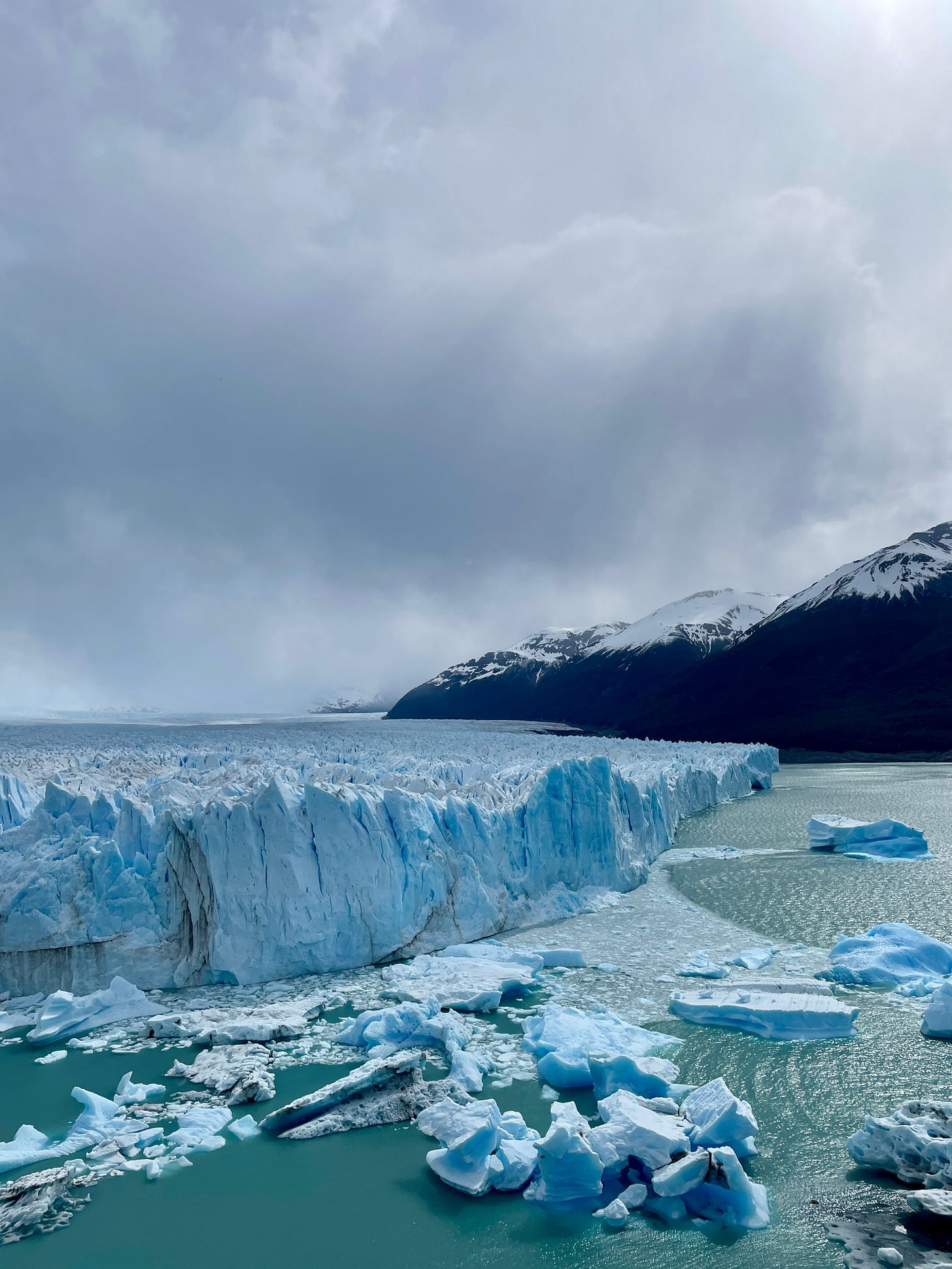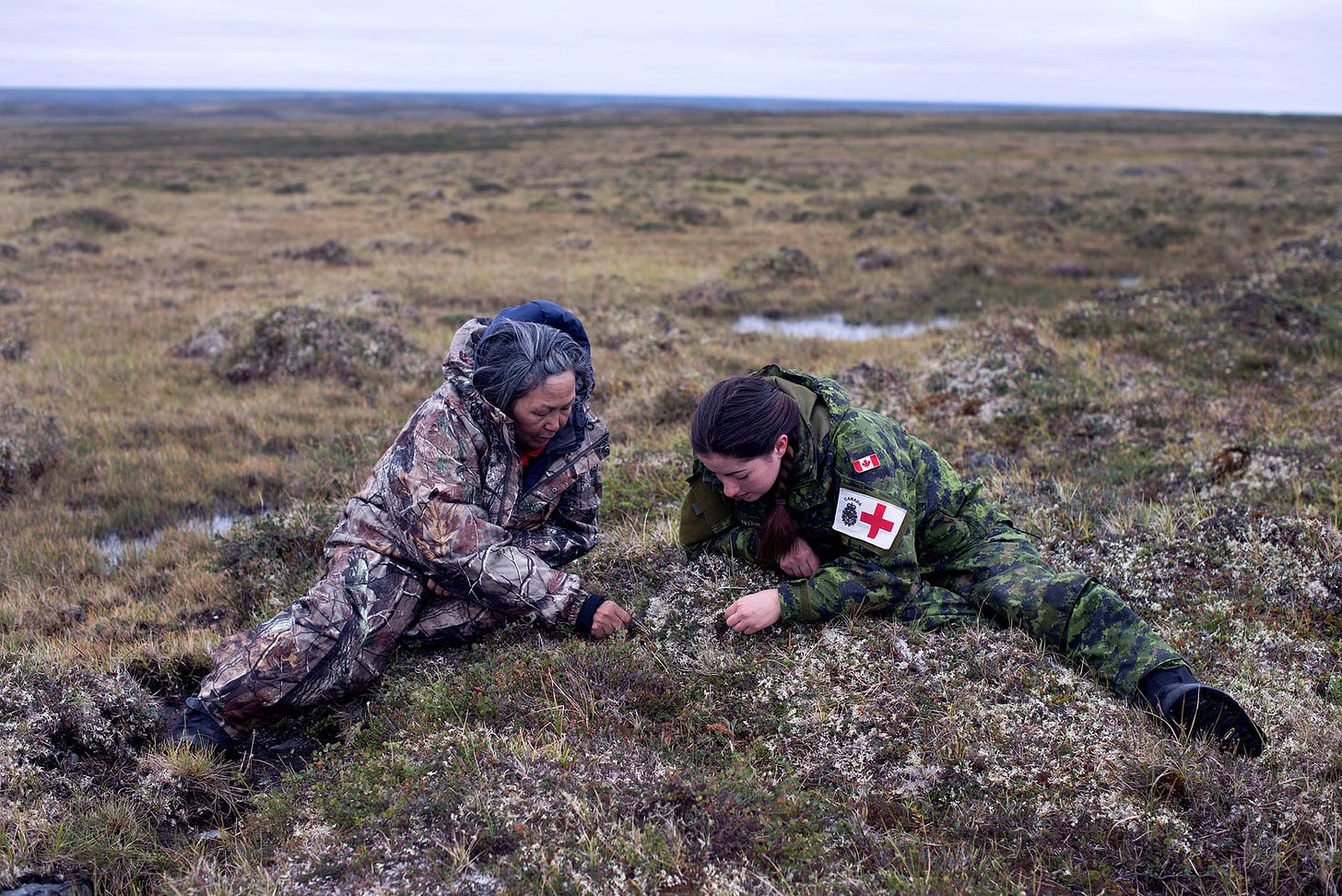the spectacle of climate change
the symbols we rely on to grasp climate change and, simultaneously, ignore it.
images courtesy of,
artists featured: Edward Burtynsky, Louie Palu
galleries: Nicholas Metivier, Stephen Bulger
Edward Burtynsky
Rare Earth
Nicholas Metivier Gallery
May 11 - June 8, 2024
Louie Palu
Distant Early Warning
Stephen Bulger Gallery
June 27 - August 24, 2024
The Perito Moreno Glacier in Los Glaciares National Park, on the Argentine side of Patagonia, is arguably the most breathtaking natural wonder I have seen. While touring winding boardwalks around the 200-foot ice wall, I witnessed several car-sized chunks of the glacier plunge into the lake below. Despite sharing the excitement of those beside me who cheered, filmed, and cried, I couldn’t help but think, there it is: climate change.
I expressed this to the person leading our tour.
“Actually, it’s just spring,” they said. “It’s totally normal.”
They went on to explain to the group that over the past 50 years, until 2020, the change of mass in the glacier had netted to zero, more or less. It was thus showing an unusual level of resistance to global warming. Only since 2020 has a tangible retreat in the glacier been observed, possibly due to climate change. The retreat is an estimated 2,300 feet, or 7 city blocks (article). They pointed to a silty stretch of land, not far from where we stood. This is where the northern front of the glacier once reached.
My ears perked up at the word possibly, which felt like an admonishment. We can expect a scientist to reject my shallow claim of causality; surely the glacier has had other periods of retreat in the last 18,000 years. How strange a reality, however, that in the presence of perhaps the most literal (possible) example of climate change, it remained a mere potentiality, largely out of reach.
We’ve had better success grasping climate change when framed as a human tragedy rather than melting glaciers or rising oceans. Some say we are in a futile war with nature; others, a futile war with the politicians and corporations exploiting it. Either way, there is a layer of spectacle to it (Apple characterizing Mother Nature as a strong black woman—and she is upset!) in which we are inclined to throw our hands up and proclaim that our day of reckoning has come—thus placing ourselves at the centre of the drama. The cruelty of this dramatization, and the layers of symbolism we’ve concocted around climate change, are that they abstract away the millions of other organisms caught in the cross-fire.
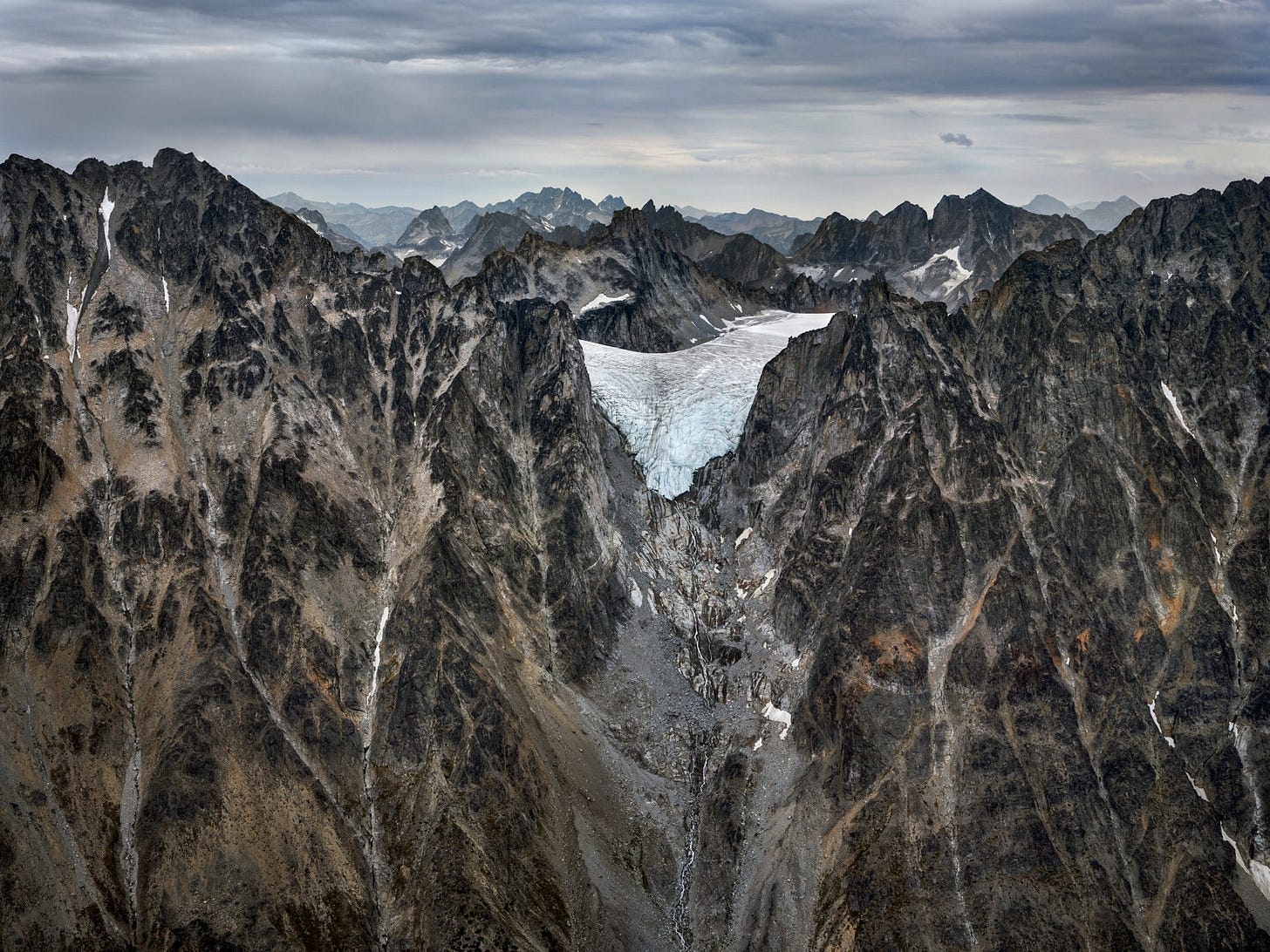
Two exhibitions from this summer, featuring works by Edward Burtynsky and Louie Palu, explored this layer of human drama which obscures the broader tragedy of climate change.
The images by Burtynsky document the forces of climate change quite literally. Palu’s works, meanwhile, explore the issue from several degrees of separation, focusing on the predictable human response. Together they hold a revealing mirror to our climate change paralysis. What the f*ck are we doing, I thought, while taking in the grandeur of Burtynsky’s images. The small wokenesses that I, the puny viewer, employ in my day-to-day (e.g., vegetarianism) were reduced to tiny badges of honour. Strangely, these tiny efforts did not feel so different from the daily exercises of a war machine in the Arctic, presented by Louie Palu. Both human dramas—geopolitical, individual—are rendered inconsequential amidst the monumental retreat of millennia-old glaciers.


Often from a helicopter, Burtynsky photographs dazzling scenes of glacial retreat in the depths of the Canadian Rockies and the glacier Hofsjökull in Iceland. The scale of these images provides an immersive, tactile representation of climate change, void of human input. His close-up views of glacier run-off are a reminder that even as we carve up the earth for our ingenious plans, its natural state remains effortlessly more elegant.
Alongside his pure earth imagery, Burtynsky presents footage from a coal terminal in Australia and a rare earth metals facility in California. Most of us associate the former (coal) with environmental destruction and the latter (rare earth metals) with renewable potential. I doubt it was intentional, but Burtynsky’s image of the coal terminal is perhaps the most cinematic of the set, while the rare earth facility appears shambolic. These images muse on the spectacle of meaning we attribute to such commodities, despite both extractive methods and the people who employ them being entirely tied to human sport (capitalism) and indifferent to the earth. The presence of the silent, melting landscapes juxtaposing the facilities gives a sense that we are children bickering over toys under the gaze of exhausted parents.
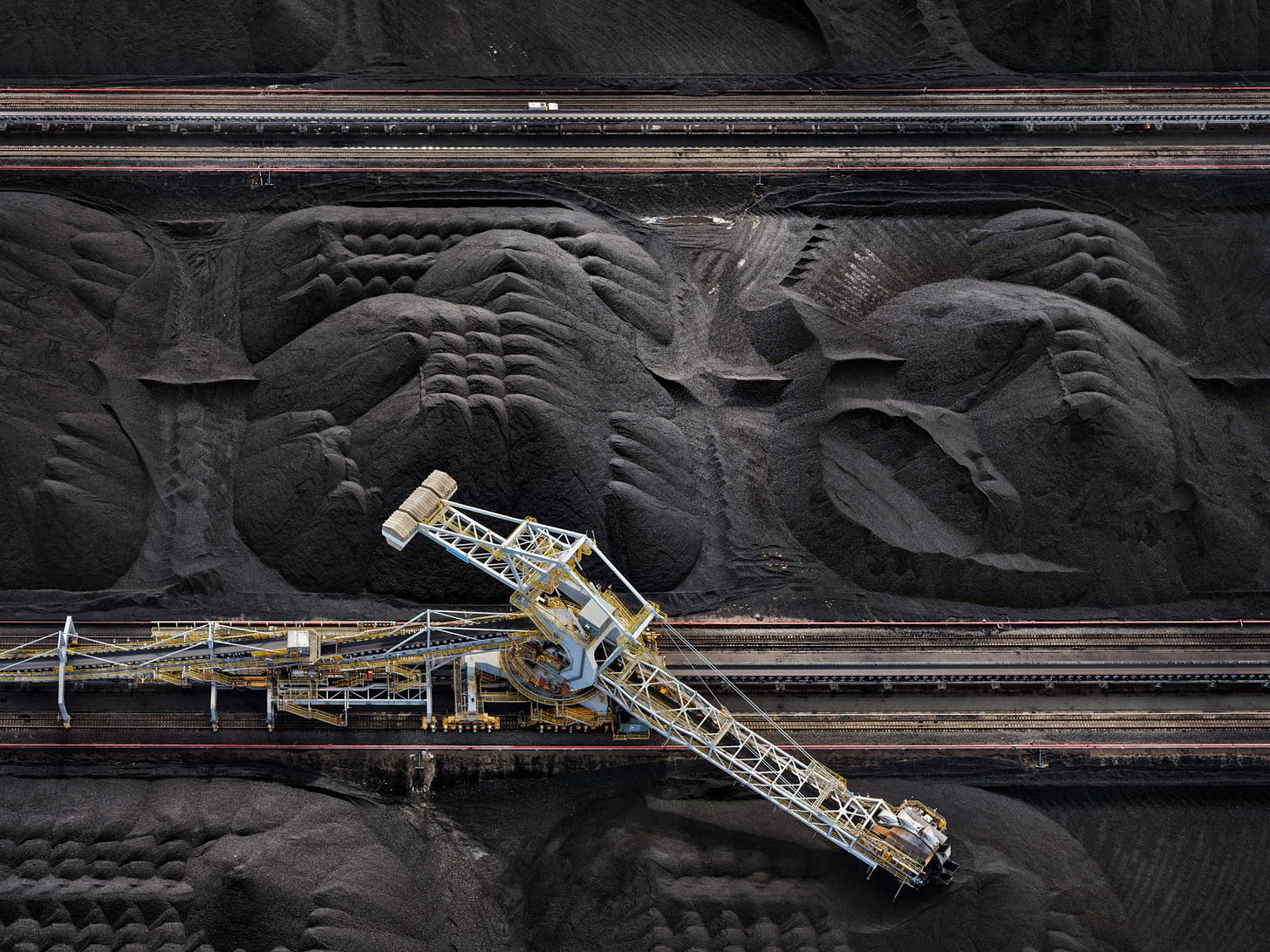
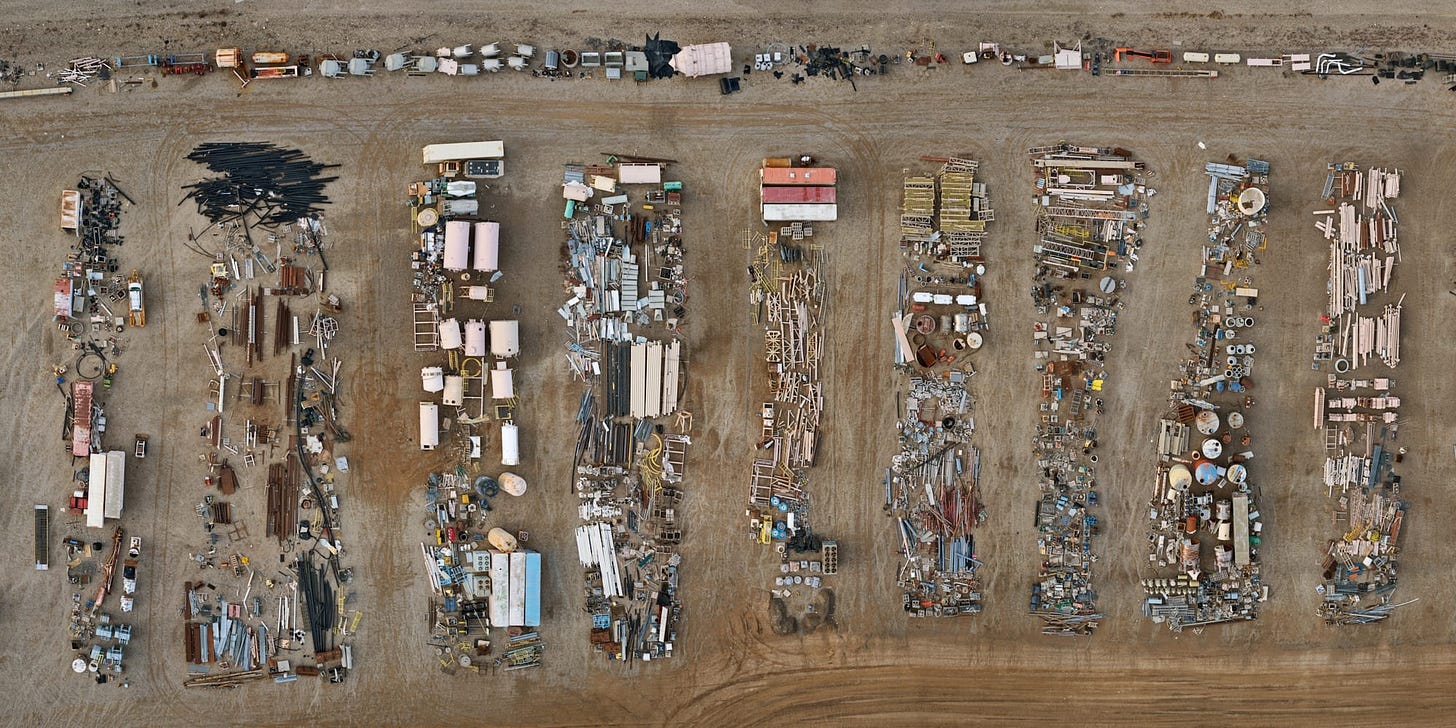
Louie Palu’s subject matter of focus in Distant Early Warning is the militarization of the Arctic, a region warming faster than any other part of the world. When the ice melts, the availability of resources and shipping routes will form a new northern economy. The Arctic nations of Canada, Finland, Denmark, Iceland, Norway, Russia, Sweden, and the United States have steadily increased military influence to stake their claims in the region.
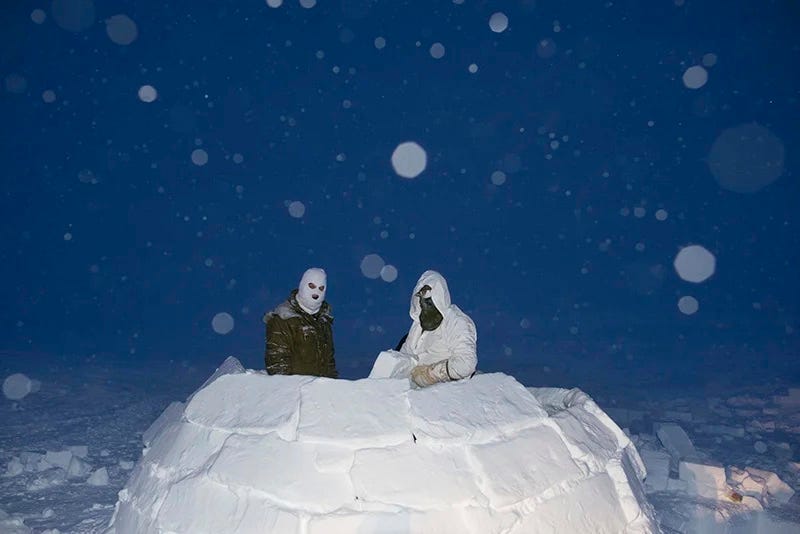
The photographs offer a peek into a world that most Canadians symbolize from afar as an empty ice-scape, rife with indigenous clichés. Our preference is to idealize these regions as unburdened by the human hand; Palu’s images puncture such fairy tales with balaclava-wearing soldiers and mysterious cold-war era military facilities. In addition to enlightening us about Canada’s north, the works illustrate our core crisis of priority around climate change: even the most climate conscious person would be alarmed by geopolitical tension in their backyard… but the source of conflict nonetheless boils down to resource extraction. The feeling remains, as always, that we are focusing on the wrong war.
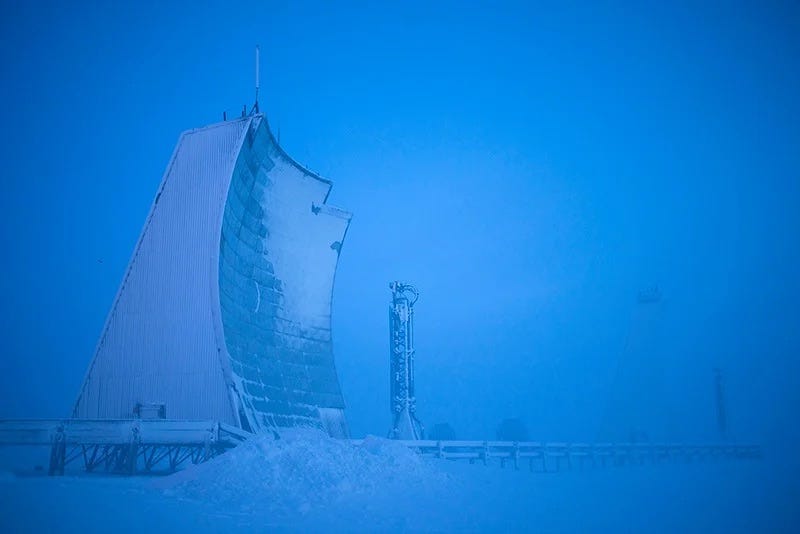
Art, too, has struggled to grasp climate change. The landscape painting, celebrated for centuries, seems to be floundering. I have visited many recent exhibitions of works in the Group of Seven-esque style which Canada adores. Their curatorial efforts now cast the images as a form of resistance to our mistreatment of nature, achieved by celebrating it. But we already love and celebrate nature. This feels like lip service; dressing up a tired genre of art with a contemporary lens, necessary because the work is failing to capture a glaring truth.
The works by Palu and Burtynsky, conversely, meet us firmly in our present hypocrisy. Per my experience witnessing glacier chunks hurdling into the lake and the brief chaos which ensued, moments of natural wonder are inevitably replaced by complicated feelings about our place within the earth. In that flash of anxiety, we forget entirely the beauty and terror we just witnessed.
The spectacle goes on 🍿



